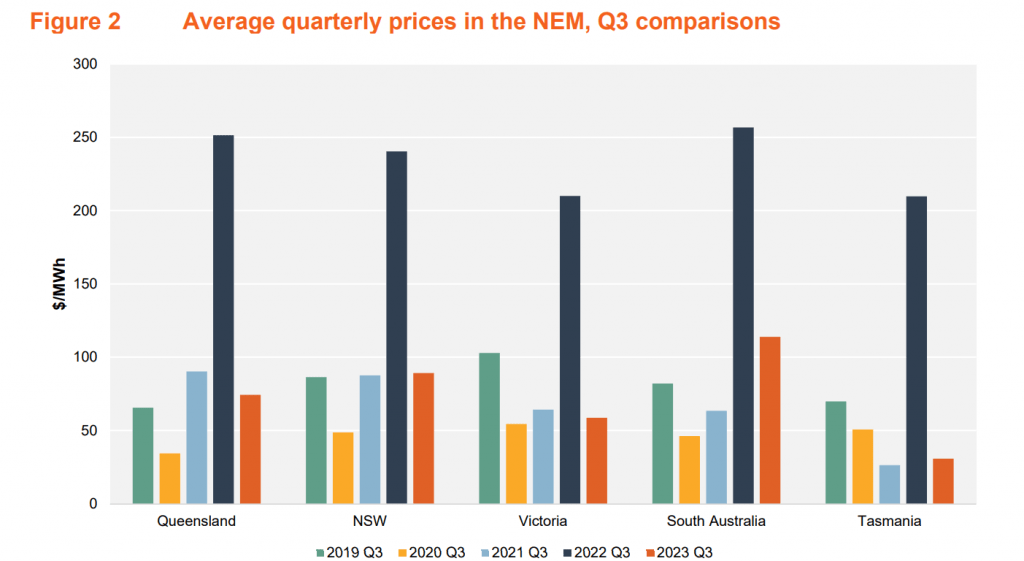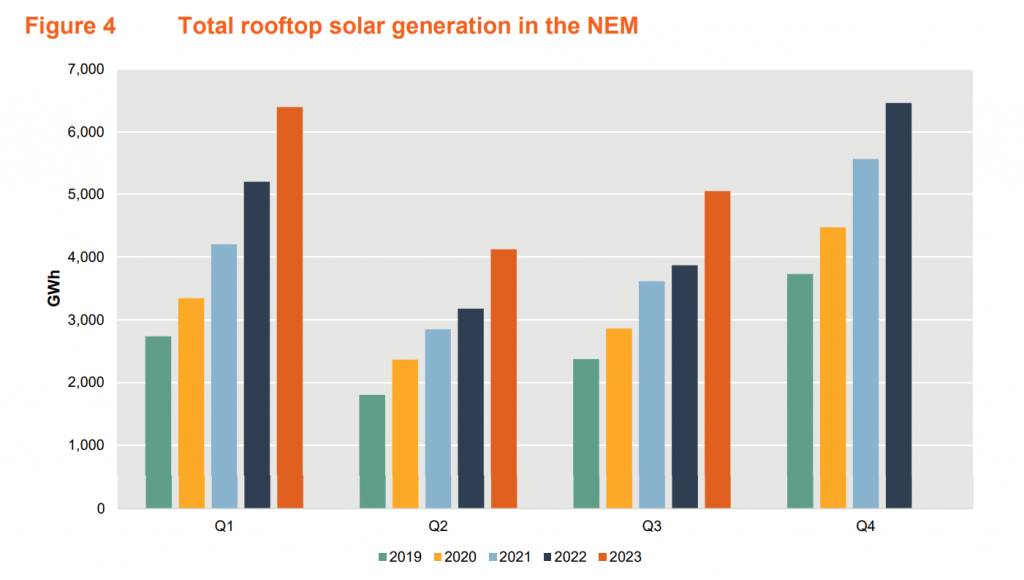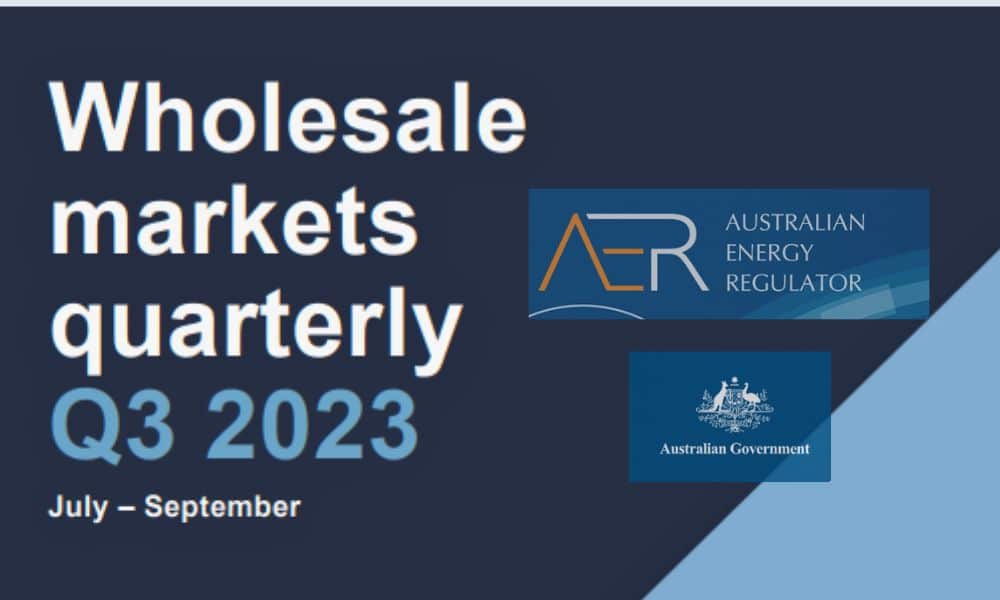The Australian Energy Regulator (AER) has released its Wholesale Markets Quarterly Report from July to September 2023. This report sheds light on several significant developments in the energy sector, most notably the impact of mild weather conditions over the winter season on energy demand and wholesale electricity and gas prices. This article will delve into this report’s key findings and implications.
Switching to a better plan? You may already have an energy plan but want more power or to shop for a better deal.
Energy Matters‘ Free Energy Bill Comparator” is a cutting-edge energy bill tool that compares your area’s most competitive retail offers. We collect the data from our wide range of trusted retailers, allowing you to decide on the switching plan and find the best deal for your needs.
If your goal is to get more electricity and minimise the cost of your gas and electricity bills, switch to a better plan now!
Key findings
The Australian Energy Regulator’s (AER) latest Wholesale Markets Quarterly Report reveals that mild winter weather led to lower energy demand and a fall in wholesale electricity and gas prices during the July to September quarter of 2023.
- Average wholesale electricity prices in the National Electricity Market (NEM) were less than half that seen at the same time last year. In all regions except South Australia, prices are similar to prices seen in the third quarter of 2021.

Note: This chart compares Q3 volume-weighted average quarterly prices, meaning Q3 prices are weighted against native demand in each region. The AER defines native demand as the sum of initial supply and total intermittent generation in a region.
Source: AER analysis using NEM data.
- Electricity demand fell to its lowest-ever level for a third quarter, averaging about 5% lower than the same period last year. Mild weather conditions drove this alongside record-high rooftop solar output, which was 31% higher than the same quarter last year.
- In east coast gas markets, those same mild conditions saw third-quarter residential and commercial gas demand fall to 10-year lows, with domestic gas spot market prices averaging just above $10 per gigajoule, a 28% decrease from the previous quarter and a 60% decrease than the same time last year.

AER board member Jarrod Ball's comments
AER Board Member Jarrod Ball said the regulator is pleased to see prices in wholesale markets easing.
“Not only did we see energy prices and demand fall during the July to September period, but we also saw several quarterly records set for rooftop solar output, electricity demand and gas storage levels.
“The National Electricity Market also saw black coal contribute 45% to total output, its lowest share on record.
“As the energy transition progresses, it was pleasing to see 2 windfarms, 2 solar farms and 2 batteries commence generating during the quarter and while they will add 800 megawatts of capacity once fully commissioned more is needed to keep pace with the planned coal plant retirements over the next decade,” Mr Ball said.
The outlook for energy prices and demand
The AER’s report also provides insights into the outlook for energy prices and demand in the coming months.
The report notes that international liquid natural gas spot prices increased during the quarter and are trending upwards, in line with usual expectations when the Northern Hemisphere enters winter, and heating demand rises. However, the impact of the European winter on prices is likely to be mild compared to 2022 due to European storage levels reaching targets early in the season.
Closer to home, the Iona gas storage facility ended the quarter with record-high storage levels. This, combined with forecast gas surplus conditions, means that market participants are better placed to manage gas-powered generator demand peaks over summer, should they materialise.
Overall, the AER’s report is a positive sign for Australian energy consumers. Lower wholesale prices are likely to flow through to lower retail prices, providing some relief for households and businesses who are facing rising costs of living. Read more about Cost of Living Crisis in Australia: Power Bills to Soar By Up to 25 Per Cent and Consumers Warned Of Electricity Price Spikes Of At Least 20%: Steps In Reducing Energy Consumption.
The report also highlights the growing role of renewable energy in the Australian energy mix. Rooftop solar output is at record levels, and new wind, solar and battery projects are coming online. This is helping to reduce demand for fossil fuels and lower emissions.

Note: Uses aggregated figures from half-hourly interval data.
Source: AER analysis using AEMO rooftop PV data.
However, more needs to be done to ensure that the energy grid can meet future demand, particularly in the wake of planned coal plant retirements. The AER’s report calls for continued investment in renewable energy and energy storage to ensure that Australia has a reliable and affordable energy system in the future.
Implications
The report’s findings suggest that the Australian energy market is becoming more resilient to weather events and other shocks. This is partly due to the increasing penetration of renewable energy and battery storage, which can help meet demand and stabilise the grid.
However, the report also highlights the need for further investment in renewable energy and transmission infrastructure to meet Australia’s growing energy needs and support the transition to a net zero emissions future.
Source&Images: Australian Energy Regulator (AER) News
Going solar
Are you looking to save money on your electricity bills and reduce your carbon footprint? Solar energy is the perfect solution! Energy Matters can help you get up to 3 FREE quotes from pre-qualified and vetted solar firms in your area.
Energy Matters has been a leader in the renewable energy industry since 2005 and has helped over 40,000 Australian households in their journey to energy independence. With Energy Matters, you can be sure you’re getting the best possible deal on solar energy. We only work with reputable solar firms with a proven track record of delivering high-quality solar systems.













































